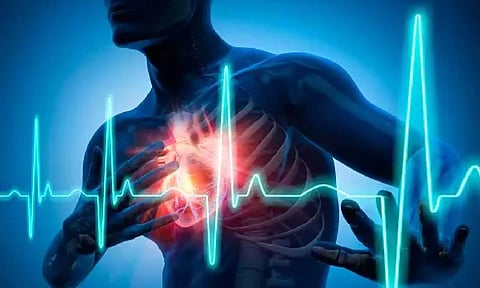

CHENNAI: Our heart has blood supply through the coronary arteries through a conduction system’ of the heart. The blockage of the coronary arteries results in a ‘heart attack’. Similarly, any damage to the wiring system of the heart can cause a very slow pulse rate called bradycardia or heart blocks.
It can sometimes lead to the abnormally fast heart beating known as ‘tachyarrhythmias’.
When such abnormal rhythm patterns form inside the heart, they can be potentially dangerous at times, as they result in giddiness and falls, especially in heart disease patients.
This can be there since birth or can be acquired during the aging process or after a heart attack. In medical terms, we call these abnormal fast heart beatings as supra-ventricular or ventricular tachycardias.
Most of the time, they can simply be detected by taking a regular electrocardiogram, popularly known as ECG. The majority of them just come and go, but sometimes they persist for longer times which can result in complications like falls due to giddiness, paralysis, or heart failure.
After evaluation of the patient and the ECGs, the Cardiac Electrophysiologist will decide whether this can be brought down under control by anti-arrhythmic drugs.
If they do not respond to drugs, an electrophysiological study and radiofrequency ablation.
In general, elderly people are at risk of developing slow rhythm problems, like slowing heart rates, which require pacemaker implantation if severe. However, tachyarrhythmias are common at all ages. People with heart infections heart attacks, high blood pressure, heavy alcoholism, and any family history of sudden cardiac death are at higher risk compared to the normal population.
Advanced technologies such as 3D anatomic mapping systems not only for precision and accuracy of the procedure but also to avoid potential damage to the normal areas of the heart.